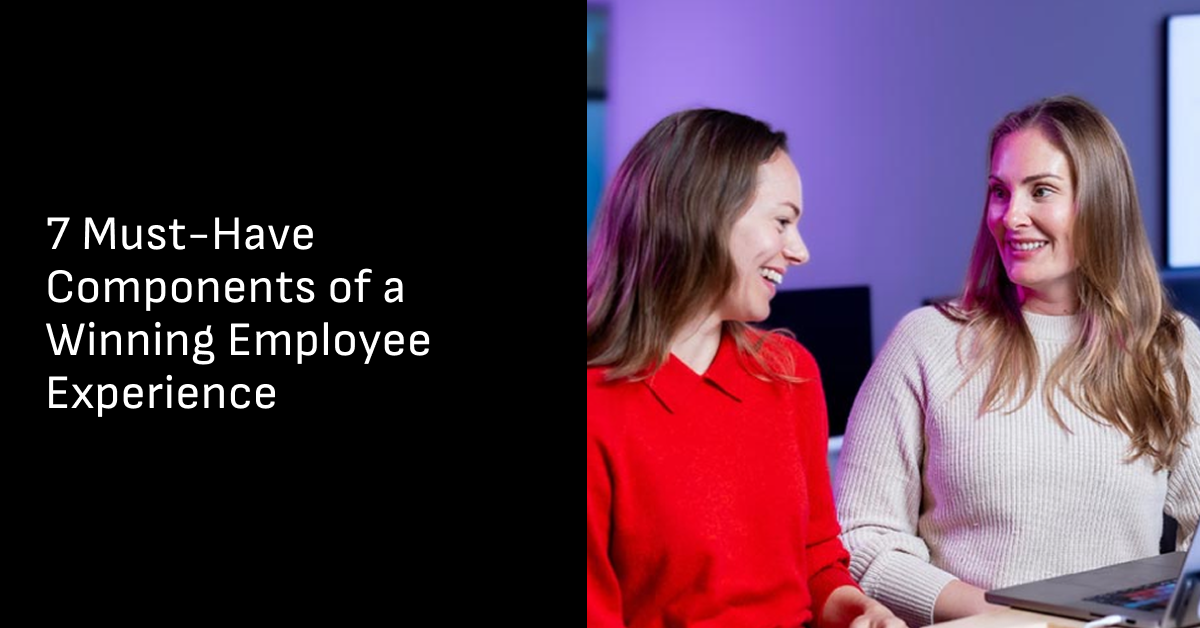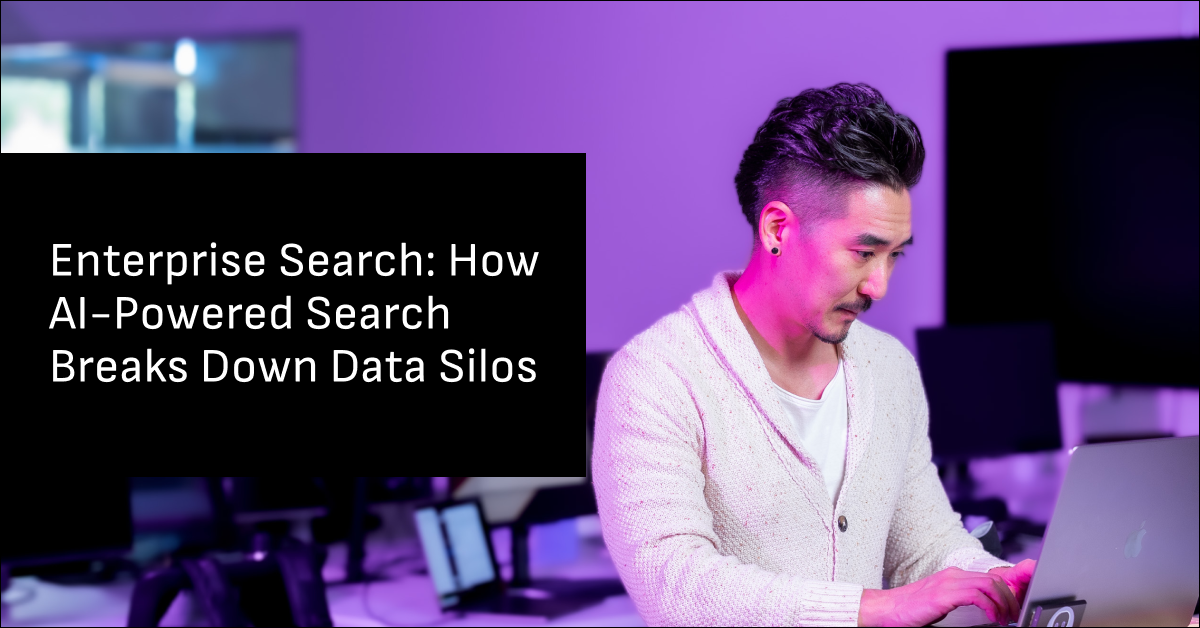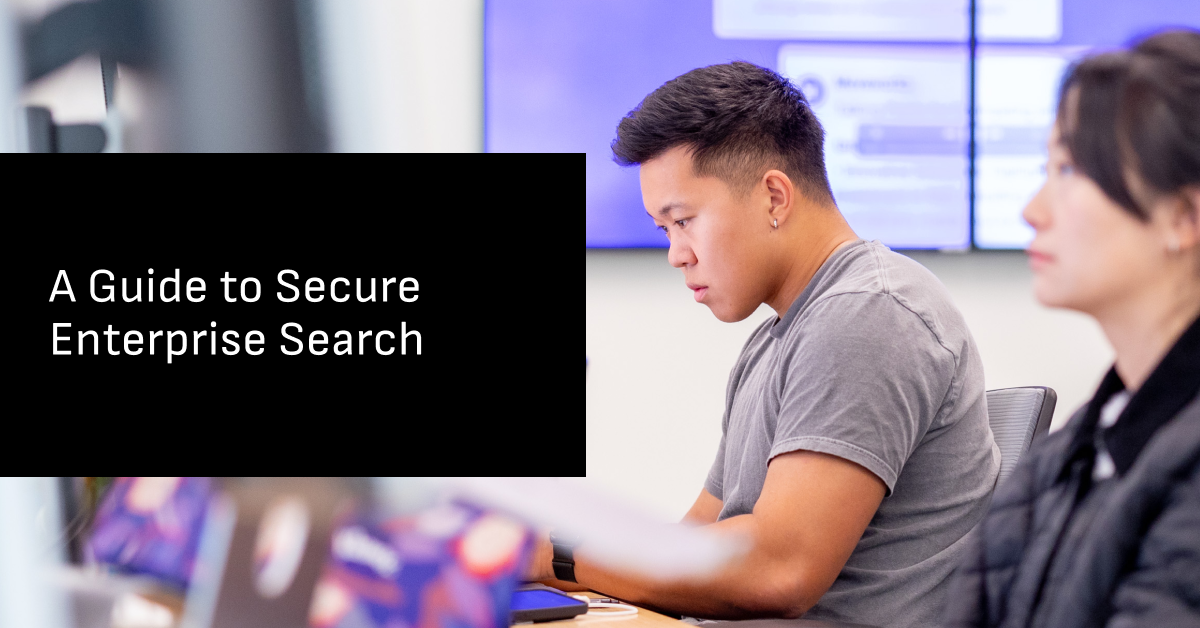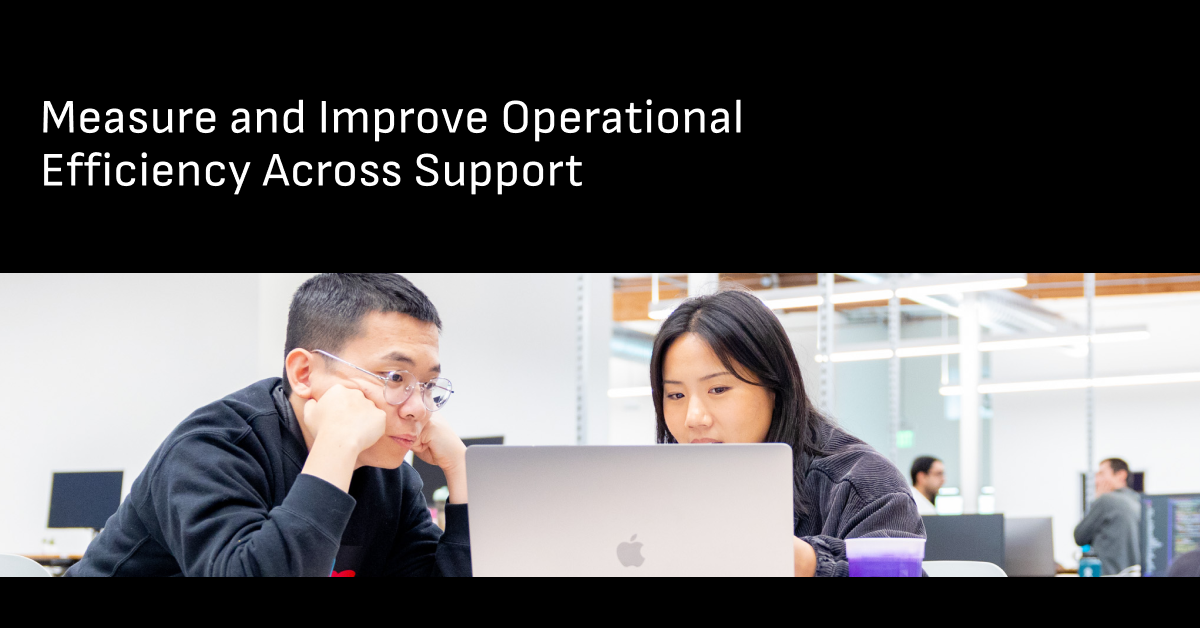Highlights
- Manual HR processes leave employees waiting days for simple answers, while HR teams get trapped in repetitive work instead of strategic initiatives.
- When companies can’t meet employee expectations for instant, consumer-grade experiences, it costs them productivity, engagement, and even talent retention.
- Don’t forget the hidden costs — poor HR service delivery can lead to compliance risks, shadow IT workarounds, and subpar culture-building and workforce planning.
- AI automation can target high-volume, repetitive requests like password resets, benefits questions, and policy clarifications, delivering immediate wins that build employee trust.
- Modern HR service delivery facilitates faster resolution times, reduced operational costs, and higher employee satisfaction — without expanding team size.
It's 9:47 AM, and your HR inbox is already overflowing.
Forty-seven tickets and counting, ranging from password resets to benefits enrollment questions, and someone's asking about parental leave policy for the fifth time this week.
And really, your employees aren't asking for too much. They just want the same instant, easy service they get everywhere else, from their banking app to their favorite streaming platform. But most HR teams are still stuck managing requests through manual processes or limited automations that frustrate both sides.
Forward-thinking organizations are transforming HR service delivery into something that actually works for everyone. They're using AI and automation to resolve routine requests instantly, eliminate blockers and bottlenecks, and give HR teams the space to focus on creating exceptional workplace experiences that help people thrive.
We’ll explore how to overcome the challenge of HR overload by providing a clear path to implementing modern solutions that reduce manual work and improve the employee experience. It shows you how to break the cycle of exhaustion where routine, repetitive tasks prevent your HR team from focusing on high-value projects like your critical onboarding initiative.
What is HR service delivery?
HR service delivery is the operating model, processes, and tools an organization uses to provide HR support, resources, and services to employees throughout their lifecycle, from onboarding to offboarding. It's the infrastructure that connects your people (your most important asset) to the information, processes, and support they need to be successful in their roles.
Think beyond traditional help desks to employee self-service portals, automation workflows, conversational AI assistants, and integrated knowledge bases that work together to deliver consistent, positive employee experiences.
The key elements of effective HR service delivery include:
- People: HR business partners, specialists, and shared service centers
- Processes: How employees access support, whether through chat platforms, web portals, or direct requests, standardized workflows and SLAs for common requests
- Technology: Portals, knowledge bases, case/ticketing systems, and automation
Effective service delivery often begins with understanding and optimizing performance metrics which track speed, quality, and employee satisfaction.
Why HR service delivery matters
Ineffective HR service delivery often creates cascading problems that eventually impact everyone in your organization.
- For employees, delays and inefficiencies lead to compounding frustration. When someone needs access to systems, information about benefits, or help with onboarding tasks, waiting days for responses disrupts their ability to contribute. This can lead to lower employee engagement and lost productivity as people struggle with basic workplace needs.
- For the organization, inefficient delivery can inflate operational costs while creating compliance and retention risks. Manual processes require more staff time, increase the likelihood of errors, and slow down critical business functions. When HR service delivery breaks down, talented people may leave for organizations that provide better support experiences.
- For HR teams, lack of streamlined delivery can trap professionals in repetitive, transactional work instead of strategic initiatives. Time spent repeatedly answering the same questions or manually processing routine requests is time not spent on workforce planning, culture building, or talent development. HR teams might stay busy, but they struggle to drive meaningful business impact.
Ultimately, HR service delivery directly influences employee satisfaction, operational efficiency, and the ability to attract and retain talent in competitive markets.
HR service delivery models
Most organizations don't fit neatly into a single service delivery model. You might have centralized benefits administration but decentralized recruiting. Or shared services for payroll with specialized teams handling complex employee relations cases.
That's perfectly normal. The aim is finding the right mix for your organization's size, complexity, and culture.
- Some teams centralize everything under one HR function for consistency and control.
- Others distribute support across business units to stay closer to their employees' daily needs.
- Many use tiered approaches where routine questions get handled at Level 1, complex issues escalate to specialists, and strategic work stays with senior HR leaders.
How well you execute the fundamentals matters more than the model you choose. Whether you're running a lean centralized team or managing a complex hybrid structure, success comes down to the same seven components that we'll touch on next.
How AI streamlines HR delivery
Think about the last time you needed help from HR. Maybe you had a question about your benefits or needed access to a new system. How long did it take to get an answer? And how much back-and-forth was involved?
Now imagine getting that same help instantly, at any time of day, through a simple conversation. That's what AI brings to HR service delivery.
AI streamlines HR service delivery for enterprises by automating routine and repetitive tasks like answering common employee queries through chatbots and virtual assistants, significantly reducing the workload on HR staff. This automation enables faster and 24/7 self-service for employees, improving the overall user experience and response times.
Additionally, AI tools use data and business context to personalize service delivery, offering tailored resources and identify service bottlenecks, which allows HR professionals to focus on more strategic initiatives.
This also frees you from being the person who answers the same questions over and over. Instead, you're able to focus on the work that actually moves the needle, building stronger workplace culture and developing talent strategies while creating employee experiences that set your organization apart.
The results speak for themselves. Organizations using AI for HR service delivery typically see faster resolution times, lower costs (according to 93% of HR managers), and significantly higher employee satisfaction scores. Because these systems keep learning from every interaction, they also get better over time without extra effort on your part.
7 critical components of effective HR service delivery
Successful HR service delivery takes seven interconnected components all working together to create great employee experiences.
1. Automation and AI tools
Automating HR tasks like onboarding and ticket routing is a great entry point for HR service delivery. Modern AI systems go beyond basic chatbots, using agentic AI that learns, adapts, and proactively addresses employee needs.
Unlike rule-based automation, agentic AI can understand context, make decisions, and complete complex tasks autonomously. For example, when setting up direct deposit, it can verify information, guide users, update systems, and confirm completion — all without manual help.
These advanced systems can also integrate with your HR tech stack, including HRIS platforms and collaboration tools, to ensure consistent experiences across all touchpoints.
2. Clear service delivery plan
Here's a scenario every HR leader knows: An employee submits a request and then... crickets. They don't know if it was received, who's handling it, or when to expect a response. Meanwhile, you're not sure if it's stuck somewhere in the process or if someone dropped the ball entirely.
A clear service delivery plan can help eliminate this frustration for everyone. When you define services, response times, and who handles which requests, employees know what to expect, and your team knows who’s accountable.
Start by mapping your current processes for common requests like benefits, access, and policy questions. Then track their flow, looking for delays, confusing handoffs, or requests bouncing between teams.
This audit can often reveal surprising patterns. You might find that simple administrative tasks like password resets are delayed by unnecessary approvals, or benefits questions go unanswered because ownership is unclear.
Instead of manual checks and routing, AI systems can:
- Automatically monitor requests against defined service levels
- Flag at-risk deadlines
- Route new requests to the correct team instantly
- Learn over time to continuously improve outputs
- Identify bottlenecks, knowledge gaps, and process breakdowns
Plus, your teams get data-driven insights for continuous service improvement as your workforce needs and business goals evolve.
3. Employee-centric approach
Designing HR services around employee needs rather than internal organizational structures can help you create experiences that actually work for the people you're trying to support. This means understanding the employee journey, identifying pain points, and optimizing processes from the user's perspective.
Journey mapping helps you visualize the complete employee experience lifecycle, from pre-boarding through offboarding, revealing opportunities to reduce hurdles and improve satisfaction.
Meanwhile, feedback loops can capture ongoing input about what's working and what needs improvement, while accessibility best practices help ensure that services work for all employees, regardless of location, language, or technical ability.
Start with the most common employee requests for fast, visible improvements that build confidence in new systems. Once employees trust self-service options for routine needs, you'll be able to expand automation to more complex workflows.
4. Unified service delivery model
Imagine an employee needs help updating their address, requesting time off, and getting system access. Traditionally, that likely means three different portals, logins, and clunky systems.
What if they could get all three handled seamlessly in one place?
That's unified service delivery. Instead of employees navigating multiple platforms, you create a fully integrated system that provides a single access point to everything.
AI assistants enable this by acting as intelligent translators between employees and HR systems. An employee can simply say, "I need to update my address and request vacation time for next week," and the AI handles system access, information retrieval, and actions, automatically.
From the employee's perspective, one simple conversation made everything work, with no digging through knowledge bases or navigating complicated portals. For you, multiple systems coordinated on their own, avoiding manual handoffs or approval delays.
5. Integrated knowledge management
Centralizing HR information into trusted, searchable repositories helps employees find accurate answers quickly. But traditional knowledge management approaches often create information silos where policies, procedures, and answers exist in disconnected documents and systems.
AI automates knowledge management and access, and it can even generate or update knowledge articles based on policy updates, usage patterns, and feedback. On the service side, AI-powered enterprise search can deliver context-aware answers by understanding the intent behind questions and surfacing relevant information from across all connected systems.
Maintaining valuable content takes regular updates, multiple content formats (FAQs, guides, videos), and governance processes that ensure accuracy. AI systems are able to flag outdated information, suggest updates (or make them automatically), and track which content delivers the most value to employees based on who is using it and how often.
6. Data security and compliance
Protecting sensitive employee data through access controls, encryption, and audit trails is a must for both trust and regulatory compliance. HR systems contain some of the most sensitive information in your organization, from personal details to compensation data.
Compliance frameworks for HR software include GDPR (data protection), SOC 2 (security controls), HIPAA (healthcare information), and industry-specific regulations. HR service delivery solutions can provide built-in compliance features that support these requirements without requiring separate implementations.
Balancing security with usability helps keep processes accessible while maintaining protection. Role-based access controls, single sign-on integration, and automated audit logging provide security without creating more obstacles for everyday use.
7. Continuous improvement and analytics
Ongoing optimization helps HR service delivery evolve with workforce needs and business priorities. This involves collecting data, analyzing performance, and making iterative improvements based on actual usage, not assumptions.
Important metrics to track along the way include:
Operational metrics
- Average resolution time for case management
- SLA compliance rates across service categories
- First-contact resolution percentages
Employee experience metrics
- User satisfaction scores and feedback
- Self-service adoption rates
- Channel preference and usage patterns
Business impact metrics
- Cost per transaction and overall service delivery costs
- Time savings for HR team members
- Productivity gains from faster issue resolution
Employee feedback and root cause analysis can help guide further improvements by revealing what's working well and where gaps might be. AI systems can spot trends in request patterns, identify knowledge gaps, and recommend process improvements based on data rather than intuition.
Implementing your modern HR delivery model: Tools and best practices
Implementing an HR delivery model takes a combination of strategic tools, thoughtful planning, and adherence to best practices to balance both efficiency and employee satisfaction.
How to evaluate tools
Look for solutions that align with your needs and integrate effectively with existing systems. It may sound obvious, but it’s easy to get caught up in the latest trends and flashy features, which may not necessarily be the best fit for your organization.
Key tool categories include HR service management platforms (SAP Concur, Workday), AI and automation, knowledge management, and integration platforms. Prioritize solutions that integrate well with your existing tech right out of the box and are user-friendly for employees.
Point solutions can create new silos and integration challenges. Integrated platforms that connect multiple HR functions through a single interface can deliver better employee experiences and easier management for IT teams.
Best practices for success
Don't try doing everything at once. Focus on doing the right things in the right order:
Go after the low-hanging fruit first: Target those repetitive requests that eat up the most time. When employees see immediate improvements in getting password resets or benefits answers, they'll likely trust the system for bigger things later.
Know where you're starting: Measure your current performance before you change anything. Otherwise, you'll never know if you're actually improving or just shifting problems around.
Think global from day one: Even if you're starting with one location, plan for the compliance and scaling requirements you'll need eventually. It's much easier than rebuilding everything again later.
Don't underestimate the people side: The best technology in the world fails if people don't understand why it's changing or how to use it. Clear communication and proper training can be the difference between adoption and resistance.
Start small, then expand: Roll out a pilot group first. Learn what works, fix what doesn't, then scale throughout the rest of the enterprise.
Organizations that nail both the technical implementation and the human change management piece can see employees actually embrace the new approach instead of trying to work around it.
Empower your workforce with next-generation HR service delivery
Having a unified, intelligent approach to HR service delivery can help you scale with your business growth while delivering exceptional employee experiences.
Moveworks helps by integrating all seven components into one platform, changing how employees get HR support. Instead of using multiple systems or waiting for email replies, employees can use a conversational AI assistant that understands their needs, gets information from various systems, and finishes tasks in real-time.
The platform's agentic AI capabilities include:
- Conversational interface that understands natural language requests and intent
- Instant resolutions powered by AI agents that reason through problems and take action autonomously
- Pre-built integrations that eliminate silos by connecting with existing HR systems and workflows
- Enterprise-grade security that protects sensitive information while maintaining usability
By automating routine work and delivering the right information at the right time, Moveworks helps you provide scalable HR service delivery that adapts with your business — without overwhelming your team.
See how Moveworks can help your team work smarter, not harder, with automated HR service delivery.
Frequently Asked Questions
HR service delivery encompasses all methods of providing HR support, including self-service portals, live agents, and automated systems, while employee self-service is just one channel within the broader service delivery framework. Think of self-service as a component that enables employees to find answers independently, whereas HR service delivery includes the entire ecosystem of support options.
Implementation timelines vary based on organization size and complexity, but most enterprises can achieve significant improvements within 3-6 months by starting with high-impact areas like self-service and automation. Full transformation (including all seven components) typically takes 12-18 months, though modern AI platforms can accelerate this timeline by providing pre-built integrations and workflows.
The best HR service delivery software offers pre-built connectors for major platforms like Workday, SAP SuccessFactors, Oracle HCM, and ServiceNow, along with flexible APIs for custom integrations. Look for solutions that can work across your entire tech stack rather than requiring you to replace existing systems, as this approach minimizes disruption and accelerates time to value.
Small HR teams can achieve enterprise-level service delivery by leveraging automation and AI to handle routine requests, implementing tiered service models to optimize resource allocation, and using cloud-based platforms that provide sophisticated capabilities without large IT investments. Start with automating your top ten most common requests to free up significant time for strategic work.
The most common hurdles are change management, driving employee adoption of new tools, and avoiding fragmented point solutions. Clear communication, strong executive sponsorship, and choosing integrated platforms help overcome these barriers.
AI supports compliance by enforcing access controls, maintaining audit logs, and keeping sensitive employee data encrypted. The key is choosing solutions that align with frameworks like GDPR, SOC 2, and HIPAA while still offering a seamless user experience.
Table of contents



